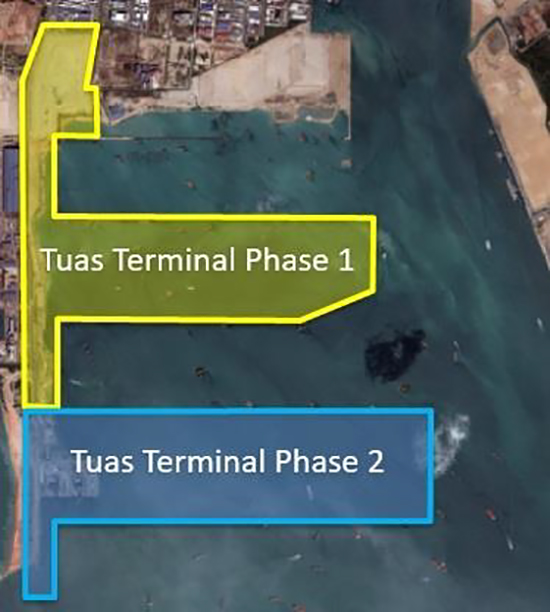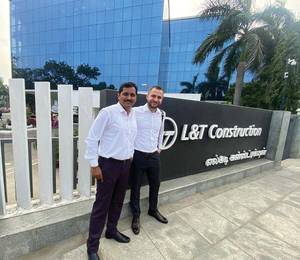The Maritime and Port Authority of Singapore (MPA) has awarded a S$1.46 billion reclamation project for Tuas Terminal Phase 2 to Penta-Ocean Construction Company Limited/ Hyundai Engineering & Construction Co Ltd/ Boskalis International BV (PHB) Joint Venture. The work includes the dredging of Tuas basin, construction of wharf structures and reclamation of 387 ha of land.
When completed, the 21 deep-water berths in Phase 2 of Tuas Terminal development will be able to handle about 21 million twenty-foot equivalent units (TEUs) per annum. When fully developed by the 2040s, the entire Tuas terminal will have a total capacity of up to 65 million TEUs per annum.
Penta-Ocean Construction Company is one of Japan’s leading contractors in coastal and waterfront development. Hyundai Engineering and Construction Company is a well-known Korean contractor in building and civil engineering. Boskalis International, headquartered in the Netherlands, operates one of the largest and most modern dredging fleets worldwide. All three companies have had a continuous presence in Singapore for many years.
The Tuas Terminal will be developed in four phases over the span of some 30 years, with the Phase 1 reclamation works scheduled to be completed by the early 2020s and Phase 2 in the mid-2020s. Work is already ongoing for Tuas Terminal Phase 1, which started in February 2015. As of March 2018, more than 70% of the 221 caissons were installed to form the wharves of Phase 1.

Tuas Terminal Phases 1 & 2. (Image: MPA)
Innovative caisson design
The scale and complexity of the project presents opportunities for the team of MPA, local and international engineers and contractors to challenge themselves and find innovative solutions to optimise productivity and efficiency. One such challenge is the construction of the wharf structure, which will see the engineering teams use an innovative caisson design to fabricate some of the largest caissons in the world on site.
The use of caisson is said to be a more efficient method of construction than other methods such as piling, and affords site personnel a safer work environment. As the caissons are of standard sizes and prefabricated in a factory-like environment on-site, productivity and quality of the wharf structures can be improved. According to MPA, advanced technology will also be applied to control thermal cracking of concrete after casting of caisson base, to achieve better durability.
For construction of foundations to caisson quay walls and capital dredging of basins and fairway, PHB Joint Venture will mobilise the biggest and most powerful cutter suction dredger and backhoe dredger to maximise efficiency, added MPA.
Furthermore, PHB Joint Venture’s reclamation design is expected to overcome the challenge of traditional reclamation filling using hopper barges, which restrict filling to just below sea level. Through the use of special purpose bulk material handling equipment such as E-crane and reclaimer barge, the use of dredged material for filling above sea level would be maximised.
Within the reclaimed land, the use of soil improvement techniques will allow dredged materials as well as surplus excavated earth from construction sites to be reused as reclamation fill materials for the project. Reusing such materials, which would otherwise be disposed of, reduces the quantity of sand fill required for reclamation.












